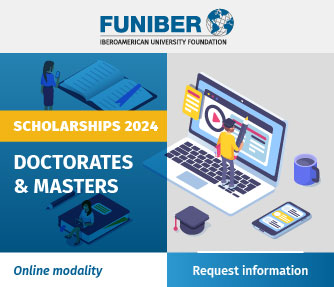Multi-Lingual Scientific (MLS) Journals is an open access publisher based in Santander (Spain), born with the aim of disseminating quality manuscripts in different disciplines that cover the most relevant topics of today.
The group of magazines that make up MLS accept unpublished works in English, Spanish and Portuguese, offering, whatever the language of submission, an English translation at no cost to the author, carried out by a team of highly qualified professionals. qualified.
All journals follow a rigorous editorial process based on anonymous peer review, in which experts from different countries around the world participate. Its main purpose is to serve as support to academic and scientific communities that wish to disseminate their work quickly and rigorously, thus supporting equal opportunities for all researchers, regardless of their origin.
All the Journals publish their issues biannually in June and December, and the manuscript submission process remains open throughout the year. Likewise, as the articles are approved by the Editorial Team, they appear in the press, ready for their final format, so they can be disseminated and read by those interested in the subject.
Accepted articles
How to teach students with any personal educational needs within higher education? The objectives of this research are: a) to analyze the use of the digital portfolio as a resource linked to self-regulated learning by teachers who practice in Higher Education; b) to review the experience and satisfaction of students with personal educational needs regarding the use of the digital portfolio as a self-regulatory resource. In order to address the objectives, a systematic review of the literature was conducted following the PRISMA statement guidelines for systematic scientific reviews. For the methodological review, one of the Joanna Briggs Institute tools was used, specifically the Checklist for Qualitative Research. To determine the state of the art, two databases were utilized: SCOPUS and WOS, covering a temporal variability between the years 2018 and 2022. For this study, 18 articles were reviewed and the results obtained are clear in establishing that the use of the digital portfolio It provides multiple benefits to students who use it. Teaching reflections encourage its use, mentioning that it provides self-reflection, self-efficacy, autonomy and also helps permanency in the achievement of teaching-learning objectives. It is concluded that it is a tool that can be used in students with personal educational needs, since the benefits towards inclusion are many, although experience and planning by the teacher are fundamental for the learning process and outcomes to be optimal.
The curricular update study in the subject of Theory and Methodology of Sports Training (TMST) at the Higher Pedagogical School of Bié, aimed to validate, using Cronbach's Alpha coefficient, a questionnaire that evaluates skills and competencies in fifth grade students. year of the degree in Physical Education and Sports at the ESPB, to justify the need for a curricular update at the TMST, for which it was conducted from a quantitative approach.The sample design adopted the census category once all the fifth-year students of the degree in Physical Education and Sports participated, consisting of 29 students, of them 25 male and five (5) female. The fundamental instrument used was the TMST competency questionnaire; the internal consistency of the questionnaire items was validated using Cronbach's Alpha coefficient. The validation results indicated a high level of reliability of (α= 0.858), corroborating internal consistency. The results of the measures of central tendency, dispersion and correlation between items, using tools such as the Friedman test and ANOVA, showed significant differences, confirming the existence of several dimensions, strong, moderate and low correlations between items, as well as an understanding of the areas in which students show greater or lesser mastery. Weak correlations between items were found as limitations, which infers the need for a review and corroboration with other methods such as item factor analysis (IFA).
This study investigates the development of media culture (MC), which serves as an essential pillar within the framework of higher education. The objective is to characterize MC in university students specializing in physical activity and health. A random sampling of participants was combined with the Bootstrap method, resulting in a final sample of 300 students across first to fourth academic years, including male and female students aged 18 to 21 years. Peer observations were conducted on educational activities that incorporated the use of ICT, and the variables of interest related to MC were recorded using a purpose-built observation guide. The theoretical analysis identified three dimensions aligned with the observation guide: communicative expressiveness, holistic interpretation, and logical achievement of hypermedia content, processes justified by the emergence of hypermedia as a new textual form. Comparisons across academic years for each dimension using the Mann-Whitney test revealed significant differences in all paired comparisons, with the greatest effect sizes observed between extreme academic years (1st vs. 4th and 2nd vs. 4th), favoring the development of MC. Robust regression analysis and comparisons of performance results (insufficient vs. adequate) showed a favorable shift in MC learning during the 3rd academic year.
Intercultural and decolonial education is still a challenge in the Brazilian educational context, especially considering the implementation of Law 11.645/2008. This study analyzed a pedagogical intervention carried out in a public school in São Paulo, the Centro Municipal de Capacitação e Treinamento Professor Lenine Soares de Jesus, in São Paulo, with the objective of reducing ethnocentrism and ethnic prejudices through the education of indigenous culture. The methodology involved an intervention structured in seven stages, developed during a bimonthly qualification course in Informatics, including research and presentation, storytelling, virtual visit to indigenous villages, indigenous art, indigenous cuisine, debates and creation of educational games based on a literature review focused mainly on Brazilian and Latin American researchers with studies in the areas of ethnic-racial education, decolonial education and indigenous education. The results, obtained through a qualitative research using the technique of participant observation, demonstrated gradual changes in the attitudes of students in relation to the indigenous theme, evidencing the need for longitudinal studies to assess long-term impacts on the local community and the professional environment in which these graduates are inserted. The intervention revealed that significant cultural transformations require time and continuity, suggesting the importance of more extensive educational programs and the involvement of the school community.
Logistics are experiencing a growth in its development, which demands the use of adequate structures and larger transport units, which also represents an indirect impact on the environment due to fuel consumption and the use of packaging. Introduction: To identify trends in urban mobility and logistics platforms in the intermediate cities of the Americas in the years 2011-2021. Methodology: The synthetic method and the PRISMA method were used to compile, interpret and select the scientific articles that were used for the construction of the systematic review. The research sample is composed of scientific articles published in Latin America between 2011 and 2021 that meet the inclusion criteria of scientific rigour of the research. Results: Due to the centralisation of commercial operations in Latin American metropolises, vehicle congestion is generated, creating delays and cost overruns in the logistics chain; this congestion generates greater demand for the use of vehicles and therefore a greater spectrum of pollution produced by fuels. Discussion: The trend of developing logistics platforms in the intermediate cities of the Americas in the last 10 years seeks to generate sustainable development because decentralising operations could address the daily problems of urban areas, such as noise, pollution and costs generated in a metropolis.













